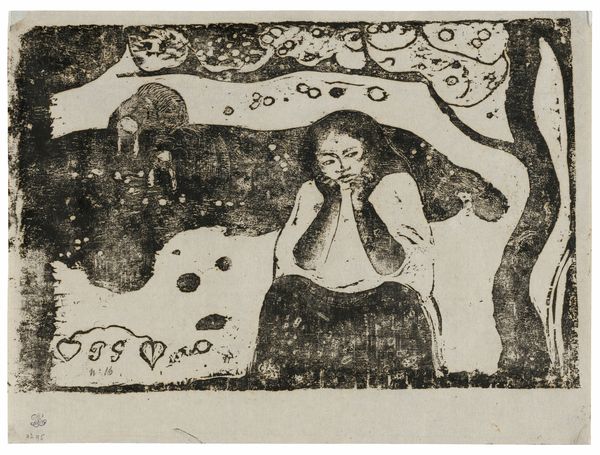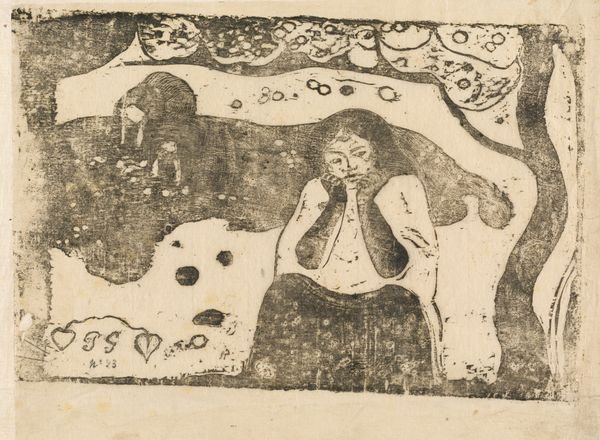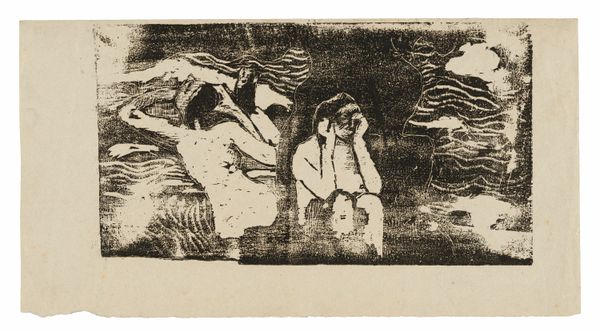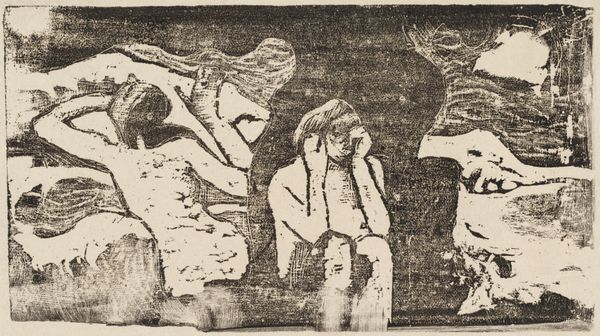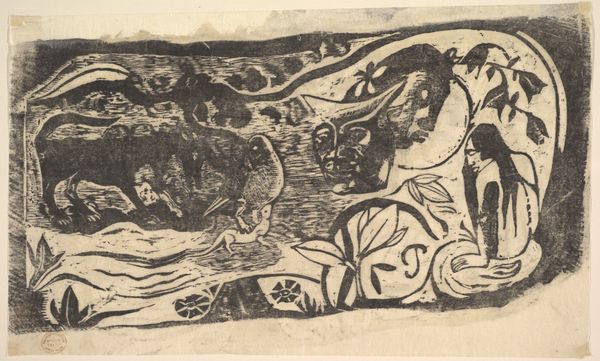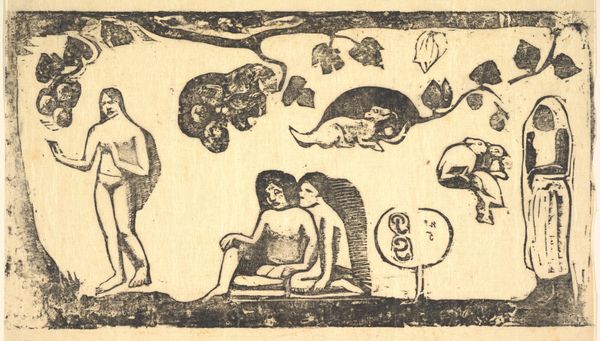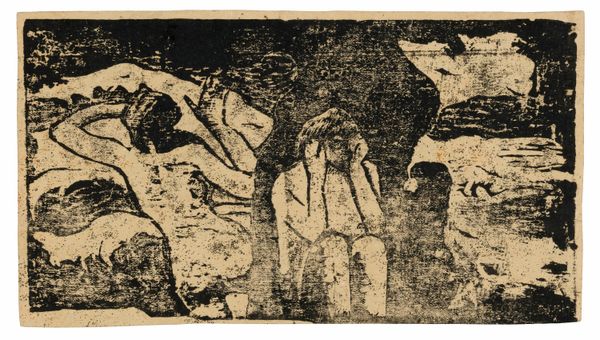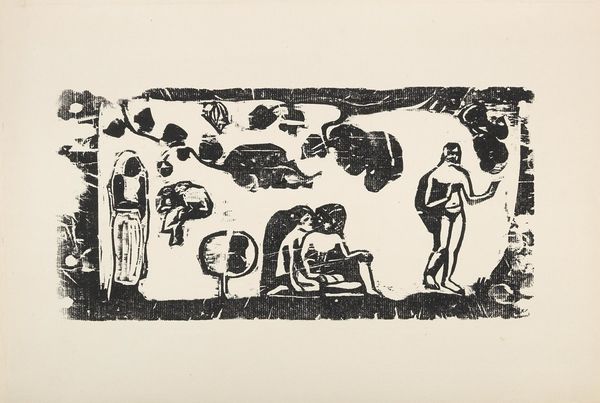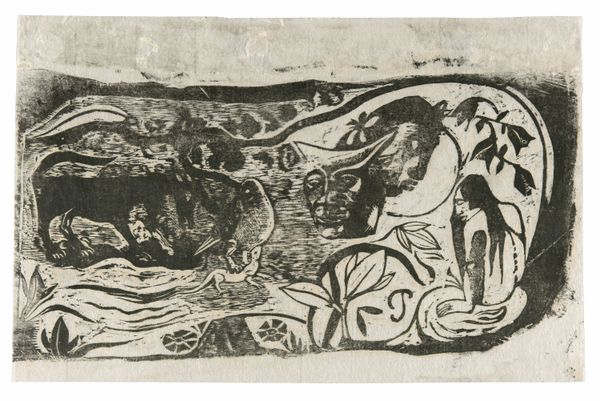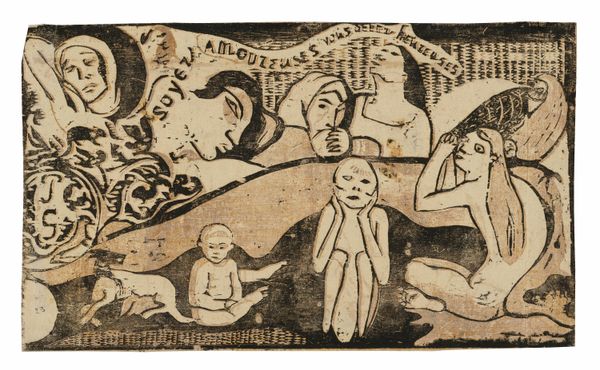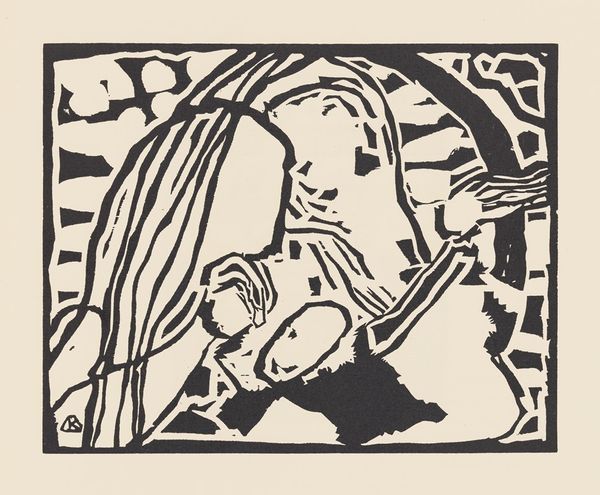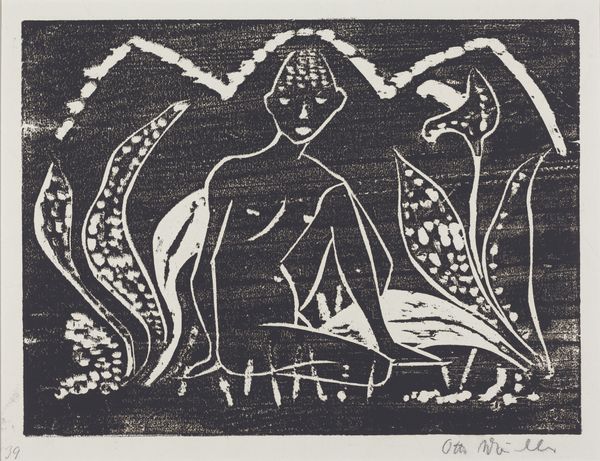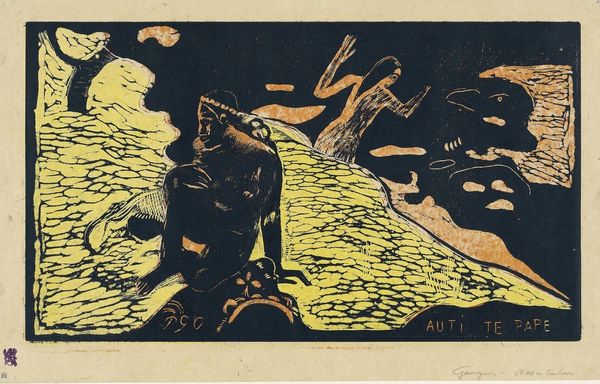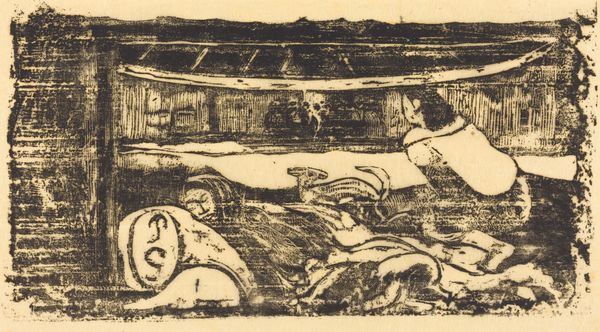
drawing, print, etching
#
portrait
#
drawing
#
narrative-art
# print
#
etching
#
landscape
#
figuration
#
symbolism
Dimensions: 7 5/8 x 11 3/4 in. (19.4 x 29.8 cm): block 9 x 11 7/8 in. (22.9 x 30.2 cm): paper
Copyright: Public Domain
Paul Gauguin created this woodcut, "Human Misery," to convey a deep sense of despair through the lens of his experiences in Tahiti. Gauguin sought an escape from what he viewed as the corruption of Western society, but his vision of Tahiti was deeply influenced by colonial perspectives, often romanticizing and exoticizing the local people. The stark contrasts and raw, expressive lines evoke a sense of emotional turmoil, reflecting Gauguin's personal struggles and existential questioning. His work is less a depiction of literal misery and more an exploration of the human condition marked by isolation, longing, and disillusionment. In his own words, Gauguin aimed to capture “the primitive, the savage” aspects of life. Here, the female figure embodies a mix of melancholy and contemplation. Gauguin grapples with themes of identity, both his own and those of the people he encountered, blending personal emotions with broader cultural and social critiques. "Human Misery" confronts us with uncomfortable questions about representation, cultural appropriation, and the complex interplay between personal experience and societal critique.
Comments
No comments
Be the first to comment and join the conversation on the ultimate creative platform.
